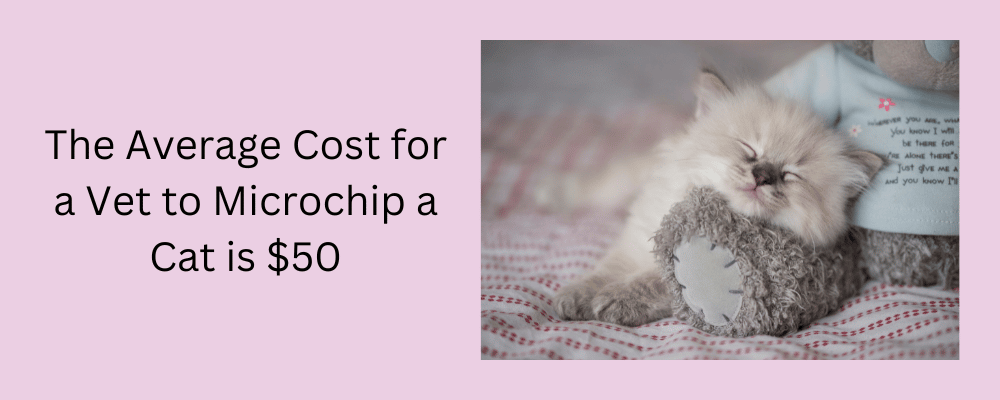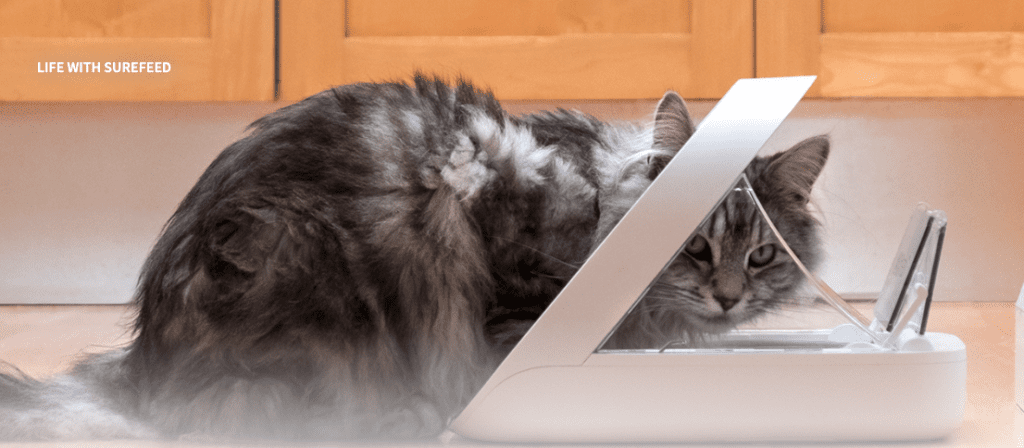Microchips for Cats – Easy “Do-It-Yourself Tutorial”
When you’re a Pedigree Cat breeder and raising kittens, you try to find ways to be efficient. You also find ways to keep your vulnerable kittens out of the vet’s office, when possible.
What Does a Microchip Do?
A microchip in a cat provides a permanent source of identification using a unique id number. The Identification number is registered to the owner of the cat. Microchips help reunite the cat with its rightful owners.
How does the cat microchip work? Is it like GPS?
A microchip is a small, sterile instrument about the size of a grain of rice. It’s inserted into the cat subcutaneously, between the shoulders using a syringe needle.
The microchip does not work like a GPS. The microchip is passive, meaning that it is not a tracking device. Instead, it is read by a special device called a microchip scanner. Once scanned, the reader will display your cat’s unique microchip number that is assigned only to him/her.
These numbers are stored in registries, some that are free and others that have annual fees for extra features. The contact information for the owner is linked to the microchip number. Pet owners can feel safe knowing that if their cat gets lost, there is a method used to locate them and return their pet safely.

Will I Always Get My Cat Back if it’s Microchipped?
If someone finds your cat and decides to keep it instead of locating its owner, then the microchip doesn’t prevent that. Thankfully, most people are honest and will return the cat home.
How Much Does it Cost to Microchip a Cat?
The cost to microchip a cat will vary, of course, by location and veterinarian. The average cost to have your vet do it is $50.00. If you do it yourself it will cost you about $4.00, if you already have the scanner.
Does a Microchip Hurt The Cat?
Microchip implants are similar to that having blood drawn or getting Sub-Q fluids administered. It’s a very quick process that is performed simply by lifting up the skin between the cat’s shoulder blades, inserting the needle, and inserting the microchip under the skin.

Can You Feel a Microchip in a Cat?
In most cases, you can feel the tiny microchip underneath the skin of the cat. Since the device is so small, you might have to feel around before you’re able to locate it.
Are There Health Risks Associated with Microchipping a Cat?
Microchips made for pets are non-toxic and don’t cause any problems as long as they’re inserted properly.
How can I track my cat’s microchip?
If you want to track or look up a microchip to determine who the owner of the cat is (or who it’s registered to, you must take the cat to a veterinary clinic or one of your local animal shelters. With a special reader and access to databases, they’re able to identify the owner and contact information for the cat.
I’m a cat breeder, should I register my cats’ microchips to me?
If you breed cats, then you should register the microchips to the cats that you own to you. Once they retire you can always update the information if they’re rehomed. When you’re dealing with multiple litters, it’s nice to have all of your kittesn organized by microchip number in a trackable database.
You can also microchip each of your kittens prior to them going to their new homes as a courtesy. If you use FoundAnimals.org, you can open an account for breeders. This will connect you the cat as a “co-owner”, in case the registered owner can’t be located.
How to Microchip Your Kittens Yourself
If you’re a Pedigree cat breeder, you can consider administering microchips to your kittens yourself. It seems a bit intimidating at first, but with the right guidance, you’ll discover that it’s quite simple.
Watch this tutorial video for a demonstration of how to microchip your kittens.
It’s best to use the smallest gauge microchip needles available. Currently, that is a 16 Gauge needle with a beveled edge. This makes the insertion almost painless for the kitten.
- STEP 1: Scan the microchip with your reader to make sure that the chip is reading.
- STEP 2: Scruff the kitten at the nape of the neck, between the shoulders, creating a skin tent.
- STEP 3: With the beveled edge pointing upward, insert the needle into the skin subcutaneously. The kitten may squirm a little so be sure to keep the kitten securely in place. Have someone help you if needed.
- STEP 4: Fully push the syringe until the chip is inserted, then push down on the skin at the site of injection and remove the needle.
- STEP 5: Safely discard the needle.
How do I register My Cat’s Microchip?
There are several databases where you can register your pet. Some of them are free, like FoundAnimals.org and others have annual fees that include more premium services. Some of these benefits include:
- Lost Pet Announcements
- ID Tags
- ID Cards
- Collars
The Top 3 Premium Microchip Registries are:
Whichever registry you choose, be sure to register your cat as soon as possible, and keep the contact information updated in the event of a move or phone number change.
Where to Buy Microchips
Your veterinary office will happily insert a microchip into your cat. The procedure can be done while they’re awake and will only take a few minutes. Some vets prefer to microchip while the cat is being spayed or neutered, but that’s not always the case.
if you’re more of a “do-it-yourself” type, there are several places where you can buy microchips.
Revival Animal is a website that is very resourceful for breeders of cats and dogs. Not only do they have a wide selection of high-quality supplements and tools that you’ll need, but they also sell microchips. Their microchips are 15 gauge needles.
NanoChipID.com specializes in the smallest microchips (1.25 mm) and the smallest needles available for microchips, which is 16 gauge. They’re sold in packs of 10, which is perfect for breeders.
PetKey.org sells 14 Gauge “Mini ISo Chips” along with other devices that you’ll need if you’re doing your own microchipping. The Chip scanner is a MUST for breeders to confirm that the chip was inserted properly and that its reading with every scan.
Keeping a Cat’s Microchip Updated
Keeping your cat’s microchip updated is very important for the life of the cat. In the event your cat is to become lost, your contact information needs to be accurate. With any change, be sure to update the database for your cats’ microchip.
Sometimes, even indoor cats can find their way out of an open door or window. Keep the following up to date; Phone Number, physical address, and email Address
Microchip Cat Feeder
One of the coolest perks of having your cat microchipped is the products that are available for pets with microchips.
The microchip cat feeder is a remarkable invention that dispenses and/or allows only a cat with a specific microchip number to eat the food in the dispenser. For example, if your cat is on a special diet, but your other pets aren’t, a microchip feeder is the perfect solution!
These come with software that has programming options for dates, times, and amounts that your cat is allowed to have. great for those chubby buddies who need to slow down the pace. Think of it like a feeder robot.

Chip Reading Cat Doors
There are also microchip pet doors, allowing your cat to enter and exit through the pet door using the microchip number. These also come with software and applications that allow you to schedule times and days when access is given.
All Benefits, No Disadvantages
In conclusion, there are no disadvantages to microchipping your cat. It’s a simple procedure that lasts a lifetime. Similar to pet insurance, it’s better to have it and not need it than to need it, and not have it.

Get the Training and Support That You Need
When you become a member today, you’ll have instant access to a personal mentor who will be there for you and give you the answers you need.
Not only this, you’ll also get access to:
- Step-by-Step Training Courses about Breeding Cats
- Full Blueprints for Marketing Your Cattery and running your business professionally
- Personal Mentor that will help you with ALL OF YOUR QUESTIONS
- Help determining the right price for your kittens
- Daily Marketing Tips via Text Message
- Unlock TikTok For Your Cattery with the course on Viral Video Creation
- Digital Resources and Tools
- Invite Only to our Discord
- Exclusive Deals on SpaySecure and Sensei Store
- Monthly “Members Only” Training Calls






